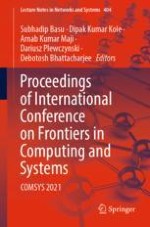2023 | OriginalPaper | Chapter
Voting-Based Extreme Learning Machine Approach for the Analysis of Sensor Data in Healthcare Analytics
Authors : Tanuja Das, Ramesh Saha, Vaskar Deka
Published in: Proceedings of International Conference on Frontiers in Computing and Systems
Publisher: Springer Nature Singapore
Activate our intelligent search to find suitable subject content or patents.
Select sections of text to find matching patents with Artificial Intelligence. powered by
Select sections of text to find additional relevant content using AI-assisted search. powered by
